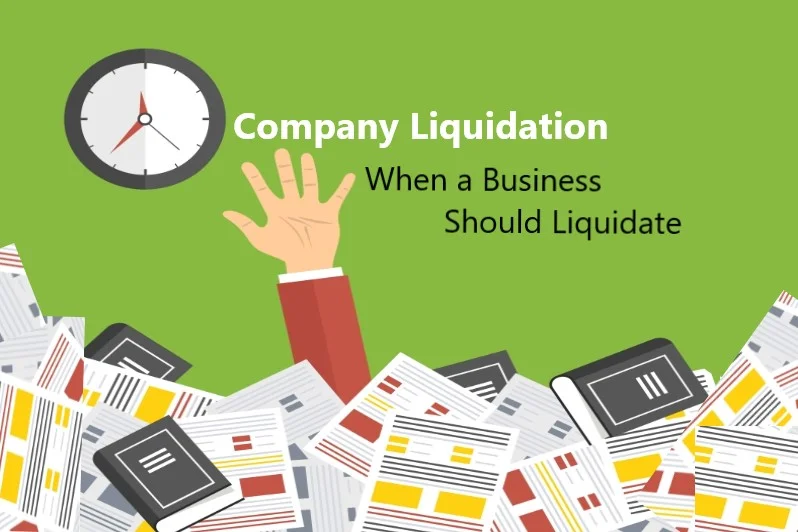The impact of the Covid-19 pandemic on Singapore’s economy is very significant. During the pandemic, thousands of workers lost their jobs and bankruptcy became a norm in Singapore. Within the first quarter of 2020, the economy of Singapore contracted by 2.2% year-on-year, which is obviously the worst economic Liquidation contraction in Singapore since the year 2009 global financial crisis.
The sudden cutback in economic activities has forced several businesses to strike off or liquidate. Presently, the future of Singapore’s economy is very unpredictable, making it difficult for business owners to plan ahead. Also, a lot of creditors are no longer willing to invest adequately in businesses since the chance of making profit is now extremely low.
Modes of Business Cessation
- Striking Off
Sometimes when companies are lacking some assets that they require to operate successfully, they choose to close down their operations. Although striking off and liquidation have some similarities, the two concepts aren’t the same. Unlike liquidation, striking off is cost-effective, and the procedures are simple. While company strike off is ideal for solvent companies that are financially dormant, liquidation is more appropriate for insolvent companies.
After a successful striking off, a company no longer has the right to sell assets, trade, or make payment. Before a company strikes off, it’s always best for such a company to complete outstanding work and close the company bank accounts.
Striking Off Requirements
Before a company can strike off, such a company must meet some requirements. Here the striking off requirements in Singapore.
- Since the company commenced, it hasn’t commenced business or stopped trading.
- The company must not owe any debt to government agencies like the Central Provident Fund or Inland Revenue Authority of Singapore.
- The company must have paid all dues in the Register of Charges.
- The company must be free from all accusations regarding legal proceedings both locally and abroad.
- The company must be free from all pending disciplinary or regulatory actions.
- The company shouldn’t have existing assets or congenital assets as of application date.
- A requisite authority should be available and willing to submit an online strike off application on the company’s behalf.
Application Procedure for Striking Off
Once a company meets all requirements, such a company can proceed to apply for striking off. It’s important to note that the application has a fixed procedure. If you own a company and you’re confused about the legal procedures for company strike off price, then the information below is for you. Here are the application procedures:
A. Use CorpPass or SingPass to submit a strike off application via BizFile+. Kindly note that the kind of submission here is online-based only.
B. If your company meets all strike-off requirements, you will receive a strike off notice from ACRA. The notice will come directly to your company officer at the registered address of your company.
C. ACRA may object to the strike off application. If ACRA objects your application, you will get the objection notification, and your company must settle whatever dispute that gave rise to the objection within two months
D. If ACRA doesn’t object your strike off application after thirty days that your application got approval, ACRA will publish the name of your company in Government Gazette. After sixty days of the first Gazette notification, ACRA will republish your company’s name in Government Gazette. Thereafter, you will receive a final notice from ACRA that your company is no longer in company register. It takes about four to six months before the entire process winds up.
2. Liquidation
When a company reaches a point where it is unable to pay debts at the appropriate time, authority can seize the company’s assets and sell them in order to pay the company’s debts and liabilities. A situation like this where a company winds up to pay debts is known as liquidation.
A company can either wind up voluntarily or compulsorily. In every striking off, companies always require the services of a professional liquidator. It’s the liquidator’s duty to take the stock of the entire assets that a company owns and pay creditors after selling such assets.
Most of the time, winding up involves complex processes and it takes a very long period of time. The level of the company’s management is one of the major factors that determine how long it takes to wind up completely.Here are more facts about voluntary and compulsory winding up:
A. Voluntary Winding Up
Those who can initiate a voluntary winding up include the company’s members, shareholders, and creditors. In voluntary winding up, the directors or shareholders have the right to choose an insolvency practitioner for themselves. The directors start the process by filing a Declaration of Solvency. Thereafter, the chosen liquidator will file notification requirements with ACRA and supervise the entire winding up procedures. The major purpose of voluntary winding up is to avoid a bigger financial problem for companies that are already insolvent. Creditors’ interest is always the priority in voluntary winding up.
B. Compulsory Winding Up
Just like the name implies, this type of winding up is according to a court mandate. Insolvency is the major cause of compulsory winding up. In line with Section 254(1) of the Companies Act, a company that owes above SGD 10,000 to a creditor must pay this debt within three weeks after receiving a payment demand from the creditor. If such a company is unable to pay this debt within the stated period, the court has a right to wind up the company compulsorily. However, the Singaporean Government has provided better relief to financially distressed companies by legislating the Temporary Measures Act. As a result of this, the debt has risen from SGD 10,000 to SGD 100,000. Also, the period to pay demand from the creditor is now six months. In essence, the compulsory liquidation of companies in Singapore goes in line with the Measures Act.




Actually I read it yesterday but I had some ideas about it and today I wanted to read it again because it is so well written.
Hellow.Nice stuff, do tell us when you post something like that!
Good blog and totally important. You can improve at any rate. I genuinely expressanother